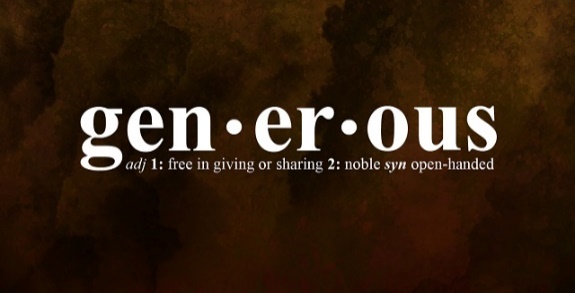A. Tithing in the Old Testament
Tithing, derived from the Hebrew word “ma’aser,” refers to the practice of giving a portion of one’s income or produce as an offering to God. In the Old Testament, tithing was an important aspect of the Israelite religious and social structure. The primary references to tithing are found in the books of Leviticus, Numbers, and Deuteronomy.
Types of Tithes: There were various types of tithes in the Old Testament:
*Levitical Tithe (10%): This tithe was intended to support the Levites (priestly tribe) who served in the tabernacle or temple. It consisted of giving 10% of one’s agricultural produce or livestock.
*Festival Tithe (10%): Another 10% tithe was to be brought to the annual feasts in Jerusalem and consumed there by the giver and their family.
*Poor Tithe (Every Three Years): An additional tithe was set aside every three years to support the Levites, the foreigners, the orphans, and the widows.
Purpose: Tithing served both a religious and social purpose. It provided for the priests and Levites who had no land inheritance, supported the religious services, and cared for the marginalized in society.






B. Tithing in the New Testament
In the New Testament, the practice of tithing is not emphasized as explicitly as in the Old Testament. Instead, the New Testament focuses on principles of giving, generosity, and sacrificial love.
*Teachings of Jesus: Jesus emphasized matters of the heart and intention rather than rigid rules. He commended the spirit of generosity and sacrificial giving, as seen in the story of the widow’s offering (Mark 12:41-44).
*Principles of Giving: In the New Testament, the apostle Paul encouraged believers to give cheerfully, willingly, and generously. In 2 Corinthians 9:6-7, he writes about giving as a matter of personal conviction rather than compulsion.
*Supporting Ministries: The New Testament does acknowledge the need to financially support those who labor in ministry (1 Corinthians 9:14). However, the specific percentage of a tithe is not prescribed.




C. The 10% Rule:
The concept of giving 10% as a tithe is rooted in the Old Testament practice, particularly the Levitical tithe. While some individuals and religious communities may still follow the principle of tithing, the New Testament encourages believers to give according to their means and convictions, with a heart of generosity.
Whether or not to tithe is a matter of personal conviction and interpretation of biblical principles. In the New Testament, the emphasis shifts from a strict tithe to principles of cheerful and generous giving. As such, not tithing is not necessarily considered wrong, but it’s important to approach the topic with understanding and respect for differing perspectives. Here’s how you might explain this to a believer:
*Understanding the Shift in Emphasis: Help the believer understand that while tithing was a significant practice in the Old Testament, the New Testament emphasizes principles of generous and cheerful giving. This shift reflects a focus on the heart and intention behind giving, rather than adhering to a specific percentage.
*Freedom in Christ: Explain that believers are no longer bound by the detailed regulations of the Old Testament Law, including the strict tithe. Instead, they are encouraged to give out of a willing heart and in response to God’s grace.
*Principles of Giving: Share that the New Testament teaches principles of sacrificial and joyful giving. In 2 Corinthians 9:6-7, the apostle Paul emphasizes that God loves a cheerful giver. Encourage the believer to give according to their means and convictions, with a generous spirit.
*Personal Conviction: Emphasize that giving is a matter of personal conviction and stewardship. Some believers may feel led to give a specific percentage, while others may give differently. It’s important to respect and honor each person’s decision and motivation for giving.
*Supporting God’s Work: Explain that the purpose of giving is to support God’s work, the ministry of the Church, and help those in need. Encourage the believer to prayerfully consider how they can contribute to these aspects in a way that reflects their relationship with God.
*Open Dialogue: Create an environment of open dialogue where believers can discuss their views on giving. Avoid judgment or pressure, and instead, encourage a respectful exchange of perspectives.
*Personal Relationship: Remind them that their relationship with God is what matters most. The focus should be on growing in their faith, seeking God’s guidance in their giving, and using their resources to honor Him.




TO SUMMARIZE
D. New Testament Emphasis on Giving
In the New Testament, the teachings of Jesus and the apostles emphasize a shift in perspective when it comes to giving. While the Old Testament included specific regulations like tithing, the New Testament focuses on the heart behind the giving and the transformative power of faith.
- Faith-Filled Giving
After the death and resurrection of Jesus, the early believers recognized that their relationship with God was no longer governed solely by laws but by faith. The act of giving was seen as an expression of their faith in a God who provided and cared for them. As they experienced God’s love and grace through Christ, their hearts were moved to respond with gratitude and generosity. - Understanding Our Stewardship
The New Testament teaches that everything we have belongs to God. Our resources, time, talents, and finances are entrusted to us by God. This understanding of stewardship means that we are called to manage these resources wisely and use them to honor God and bless others. As stewards, our giving becomes an act of acknowledging God’s ownership and our responsibility to manage His blessings faithfully. - Cheerful and Willing Giving
In 2 Corinthians 9:7, the apostle Paul encourages believers to give “cheerfully” and “not reluctantly or under compulsion.” This underscores the importance of an attitude of joy and willingness in giving. When believers give with a cheerful heart, it reflects a deep understanding of God’s generosity toward them and a desire to imitate His character. - A Response to God’s Grace
The act of giving in the New Testament is often presented as a response to God’s grace. As believers experience the transformative power of God’s love and salvation, they are compelled to express that love in tangible ways. Giving becomes an outward expression of an inward transformation, showcasing the believer’s commitment to living out their faith. - Supporting God’s Work and Others
In addition to recognizing God’s ownership and responding to His grace, giving in the New Testament is also about supporting God’s work and caring for those in need. The resources contributed by believers enable ministries to thrive, communities to be built, and individuals to receive the help they require.
Conclusion
In the New Testament, giving is not simply about a set percentage or rule but about a heart full of faith, gratitude, and love. It’s an opportunity for believers to live out their relationship with God by stewarding His blessings and sharing them with others. Ultimately, giving becomes a spiritual act that reflects our connection to God, our understanding of His grace, and our commitment to living a life of purpose and impact.
*This well researched article is written by A.T. who wants to remain anonymous. I have used it with permission from him.




Leave a Comment: